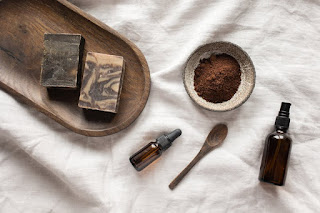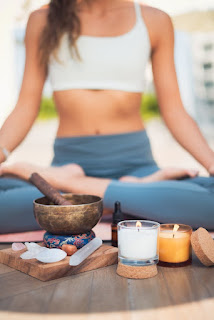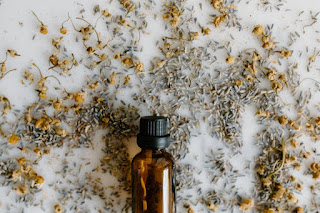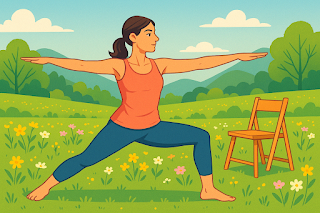Essential Oils for Yoga: Enhancing Your Practice
Essential Oils for Yoga: Enhancing Your Practice
Introduction to Essential Oils

Definition and Benefits of Essential Oils with Anti Inflammatory Properties
Essential oils are concentrated plant extracts with phytochemicals that benefit both the plant and humans. They have potent botanical properties that cater to diverse skin needs, making them a valuable tool for skincare aficionados. Essential oils can be used in aromatherapy, a type of complementary medicine that uses smell to improve health, or applied topically to the skin. However, it is important to avoid using certain products on injured or inflamed skin, as it may lead to unwanted skin reactions and increased oil absorption. Additionally, many essential oils, such as cedarwood oil and lemongrass oil, possess antibacterial properties, making them effective in insect repellent, wound healing, and as a natural remedy for various conditions.
Historical Context
In traditional yoga practices, essential oils have played a significant role. Ancient yogis often used these oils to enhance their spiritual rituals and meditation practices. Frankincense, sandalwood, and myrrh were among the commonly used oils, prized for their grounding and centering properties. These oils were believed to deepen the meditative state and enhance the spiritual experience, helping practitioners connect more profoundly with their inner selves and the universe.
Over time, the use of essential oils in yoga has evolved. As yoga practices spread globally, the incorporation of essential oils became more diverse and personalized. Today, modern yoga enthusiasts use a wide range of essential oils, each chosen for its unique benefits. From invigorating peppermint to calming lavender, the selection of oils has expanded, reflecting the broadening understanding of their therapeutic properties.
Benefits of Using Essential Oils in Yoga
The integration of essential oils into yoga can significantly enhance the practice. These oils can help create a serene environment, conducive to relaxation and mindfulness. By diffusing essential oils during yoga sessions, practitioners can benefit from the aromatic properties that promote a calm and focused mind. Essential oils like eucalyptus can aid in respiratory function, making deep breathing exercises more effective.
Tea tree oil, known for its antiseptic, antimicrobial, and antifungal properties, can also be beneficial in easing symptoms of a fungal foot infection.
Beyond the physical aspects, essential oils also support mental and emotional well-being. Lavender and chamomile, for instance, are known for their soothing effects, helping to alleviate stress and anxiety. When used in yoga, these oils can enhance the overall sense of tranquility, making it easier to achieve a meditative state.
Furthermore, the topical application of essential oils can provide direct physical benefits. Oils such as tea tree and rosemary have anti-inflammatory and antimicrobial properties, which can help soothe muscle soreness and support skin health. By incorporating these oils into post-yoga self-care routines, practitioners can aid in muscle recovery and maintain healthy skin.
The use of essential oils in yoga is not merely a modern trend but a practice rooted in history and tradition. Whether used for their aromatic qualities, physical benefits, or emotional support, essential oils offer a holistic approach to enhancing the yoga experience. As you explore the integration of these potent botanical extracts into your practice, you’ll find that they can provide a deeper connection to both the physical and spiritual aspects of yoga.

Popular Essential Oils in Yoga
Top Essential Oils for Yoga: Aromas to Enhance Your Experience
When selecting essential oils for yoga, it’s important to consider the specific needs and goals of your practice. Some of the most popular essential oils used in yoga include lavender, frankincense, eucalyptus, and peppermint. Lavender is known for its calming and relaxing properties, making it an excellent choice for winding down after a session. Frankincense, with its grounding and spiritual properties, is ideal for meditation and deepening your practice. Eucalyptus can help open the airways, aiding in deep breathing exercises, while peppermint provides an invigorating boost, perfect for energizing morning routines.
Lavender is perhaps one of the most versatile essential oils in yoga. Its soothing aroma can help reduce stress and anxiety, creating a peaceful atmosphere conducive to meditation and relaxation. Frankincense has been used for centuries in spiritual practices; its deep, earthy scent promotes a sense of grounding and connection. Eucalyptus, with its refreshing scent, is often used to clear the mind and enhance focus, while peppermint’s cooling properties can invigorate the senses and provide mental clarity. Other oils like ylang-ylang and chamomile can also be beneficial, offering their unique aromatic and therapeutic benefits to your yoga practice.
When using essential oils, it is important to exercise caution. For example, avoid using cinnamon bark essential oil in sensitive areas such as the mouth, nose, eyes, or private parts.
Methods of Incorporation
How to Use Essential Oils in Your Yoga Routine
There are several ways to incorporate essential oils into your yoga routine. One of the most common methods is using a diffuser to disperse the aroma throughout your practice space. This can help create a calming or invigorating environment, depending on the oil used. Alternatively, essential oils can be applied topically, either directly to the skin or mixed with a carrier oil. Applying oils to pulse points or specific areas like the temples, wrists, or feet can enhance their effects. Another method is creating custom blends tailored to your specific needs, combining different oils to achieve desired results.
Using a diffuser is an effective way to fill your yoga space with the aroma of essential oils, setting the tone for your practice. Diffusing lavender or chamomile during a restorative yoga session can promote relaxation, while eucalyptus or peppermint can provide a refreshing atmosphere for more dynamic practices. Topical application allows for targeted benefits; for example, applying frankincense to the forehead can enhance meditation. Blending oils offers a personalized approach, allowing you to create combinations that address multiple needs. A blend of lavender and frankincense can offer both relaxation and grounding, ideal for a balanced practice.
Pros and Cons
The Pros and Cons of Using Essential Oils in Yoga
While essential oils offer numerous benefits, it’s important to be aware of potential drawbacks. The pros include enhanced relaxation, improved focus, and physical benefits such as muscle relief and improved skin health. However, there are cons to consider, such as the risk of allergic reactions or skin sensitivities. It’s crucial to conduct patch tests before applying oils topically and to use them in moderation. Additionally, the quality of essential oils varies, so choosing high-quality, pure oils is essential to avoid adverse effects.
Balancing Benefits and Risks: What You Need to Know About Essential Oils in Yoga
To make the most of essential oils in your yoga practice, it’s vital to balance the benefits with potential risks. Always research the oils you plan to use, ensuring they are safe and suitable for your needs. Consulting with a healthcare professional or an experienced aromatherapist can provide guidance on the appropriate use and combinations of oils. By being mindful and informed, you can safely enjoy the numerous advantages that essential oils bring to your yoga routine.
Modern Perspectives in Aromatherapy
Modern Takes: Essential Oils in Contemporary Yoga Practices
In contemporary yoga practices, essential oils have become increasingly popular for their ability to enhance both physical and mental well-being. Modern yogis often incorporate oils into their practice not just for their aromatic benefits but also for their holistic healing properties. Essential oils are now commonly used in yoga studios around the world, integrated into classes to enhance the overall experience. Whether it’s a calming scent to aid in relaxation or an invigorating aroma to boost energy, essential oils are valued for their versatile benefits.
Yoga Studios and Essential Oils: Current Trends and Practices
Yoga studios have embraced the use of essential oils, incorporating them into various aspects of their offerings. Many studios use diffusers during classes to create a specific ambiance, while some offer workshops and classes focused on the benefits of aromatherapy and yoga. Instructors may also use essential oils during hands-on adjustments, applying them to pulse points or areas of tension to enhance relaxation and support muscle recovery. The trend of integrating essential oils into yoga practice reflects a broader movement towards holistic wellness, where physical, mental, and emotional health are interconnected.

Finding Your Balance: Integrating Essential Oils into Your Yoga Practice
Integrating essential oils into your yoga practice can create a more holistic and enriching experience. By carefully selecting oils that align with your needs and goals, you can enhance the physical, mental, and emotional benefits of your practice. Whether you’re diffusing oils, applying them topically, or creating custom blends, the key is to find what works best for you. With mindful use, essential oils can become a valuable addition to your yoga routine, helping you achieve a deeper connection with yourself and your practice.
Final Thoughts: The Role of Essential Oils in Enhancing Yoga
Essential oils offer a natural and effective way to enhance your yoga practice, providing benefits that extend beyond the mat. By incorporating these potent botanical extracts, you can create a more balanced and harmonious yoga experience. As you explore the various ways to use essential oils, remember to prioritize safety and quality, ensuring that your practice remains beneficial and enjoyable. Embrace the power of essential oils to elevate your yoga journey, and discover the profound impact they can have on your overall well-being.
How to Use Essential Oils Safely
Balancing Benefits and Risks: What You Need to Know About Essential Oils in Yoga
When using essential oils in your yoga practice, it’s crucial to balance their numerous benefits with mindful safety practices to avoid potential risks.
Always dilute essential oils with a carrier oil to avoid skin irritation. Carrier oils such as coconut oil, jojoba oil, or sweet almond oil not only help to distribute the essential oil evenly but also minimize the risk of adverse reactions. Essential oils are highly concentrated and can cause irritation or allergic reactions when applied directly to the skin. A typical dilution ratio is a few drops of essential oil per tablespoon of carrier oil.
Use small amounts (typically a few drops) and only for specific reasons. Essential oils are potent, and a little goes a long way. For instance, bergamot oil, known for its fruity and floral aroma, can be highly effective when used sparingly in a diffuser to create a pleasant environment or when mixed with a carrier oil for topical application. Using small amounts ensures you get the benefits without overwhelming your senses or risking skin sensitivity.
Avoid using essential oils on damaged skin, as it can cause unwanted skin reactions. Applying essential oils to cuts, abrasions, or inflamed areas can exacerbate irritation and delay healing. It’s important to use these oils only on healthy, intact skin to avoid any adverse effects.
Store essential oils out of reach of young children and in a safe location. Essential oils can be harmful if ingested or misused, so it’s essential to store them securely. Keeping them in a cool, dark place not only ensures their longevity but also prevents accidental spills or ingestion by children. Safety caps and child-proof containers are also recommended for households with young children.
By following these guidelines, you can safely enjoy the benefits of essential oils in your yoga practice, enhancing both your physical and mental well-being.

Incorporating Essential Oils into Your Daily Routine for Well Being
- Essential oils can be used in various ways, such as adding them to vegetable oils, creams, or bath gels, or smelling them, rubbing them on the skin, or putting them in the bath.
- Always check the label and consult a doctor if unsure about using essential oils.
- Incorporate essential oils into your daily routine to promote relaxation, reduce stress, and improve overall health and well-being.





